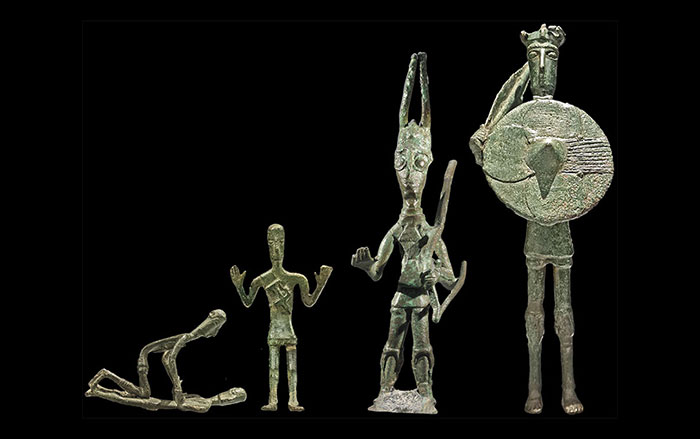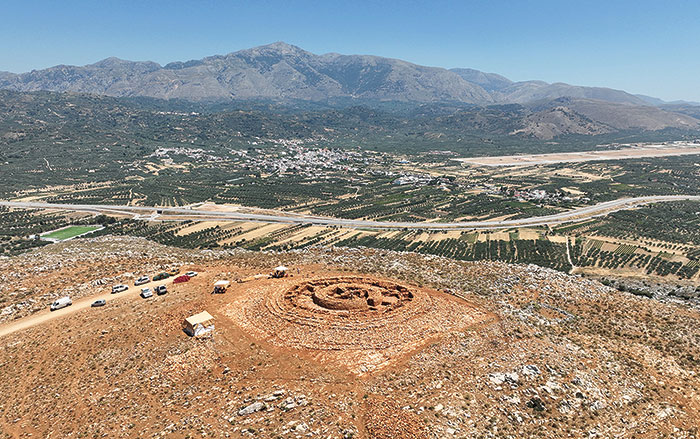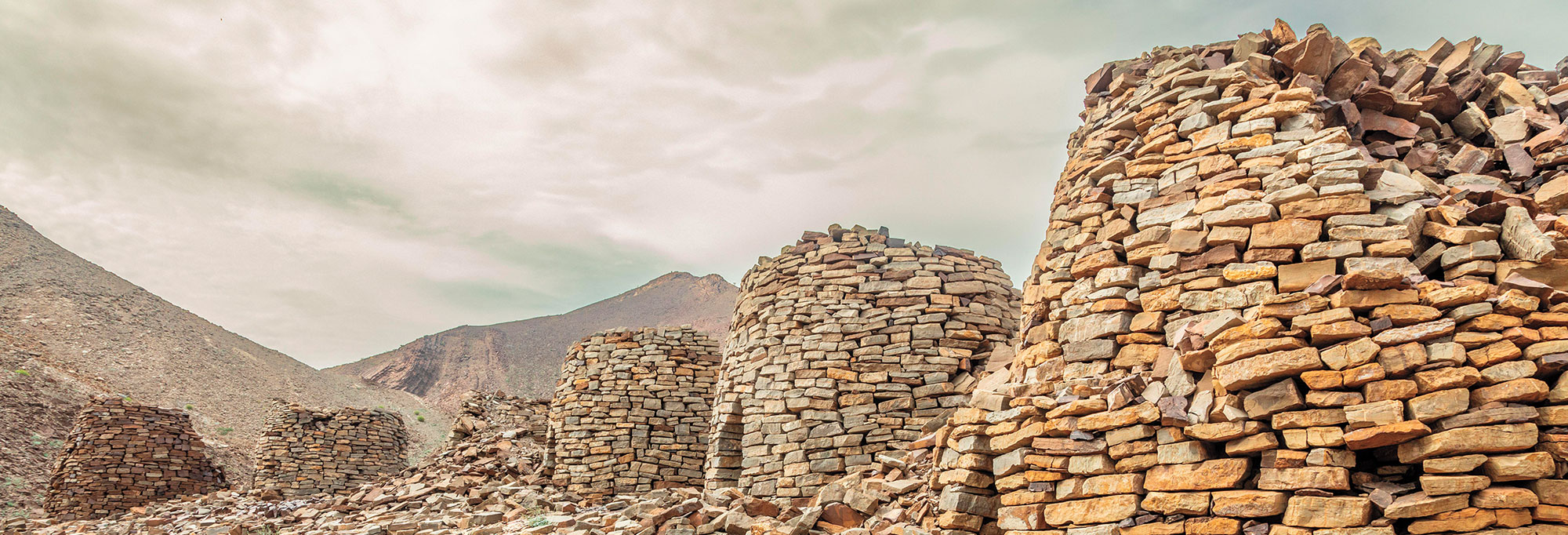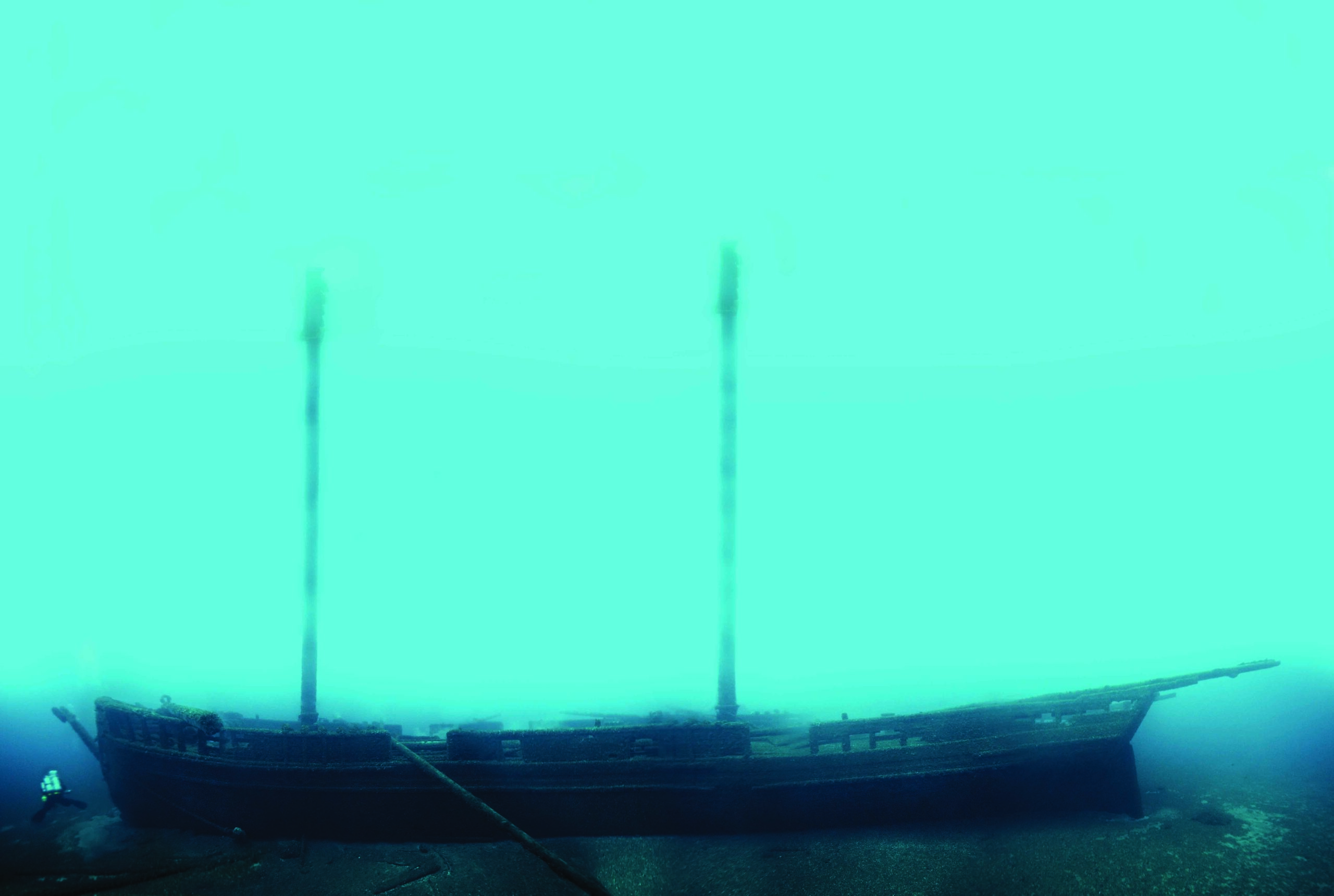
What is it?
Dagger
Culture
Bronze Age
Date
1700-500 B.C.
Material
Flint and bark
Found
Rødbyhavn, Denmark
Dimensions
7.8 inches long
Beginning in about 1700 B.C., a new material became available in northern Europe that would change the way entire classes of objects were made and how wealth and status were expressed. In Denmark, bronze, which was imported through extensive trade networks with southern Europe, became the material of choice for tools, weapons, ceremonial objects, and jewelry for more than a thousand years. But for the early years of the Bronze Age, when these networks were still developing, the toolmakers of Denmark were faced with a problem—not enough bronze. Though scholars have long been aware of the shortage of raw materials, it wasn’t until fall 2014 that archaeologists from the Museum Lolland-Falster in southern Zealand discovered a unique artifact—a Bronze Age hafted dagger that wasn’t made of bronze. In fact, it was fashioned from flint. “We know this type of dagger existed,” says museum archaeologist Anders Rosendahl, “but to find an example is simply fantastic.” Although ordinarily an indispensable and valuable object such as a dagger would have been taken by its owner to his grave, the Rødbyhavn knife was found on an ancient seabed.
The dagger is modeled after its bronze counterparts and demonstrates the skill that tool and weapon makers had developed during the preceding Neolithic period. The find is even more exciting, explains Rosendahl, because, in addition to the stone blade, the dagger’s shaft and even the birch bark wrapped around the handle to give the user a better grip were preserved after several thousand years.











